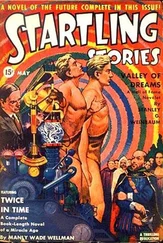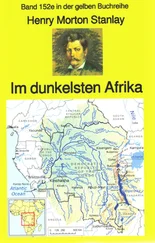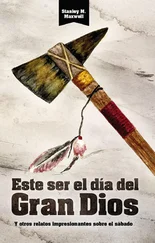James Boyd - Stanley in Africa
Здесь есть возможность читать онлайн «James Boyd - Stanley in Africa» — ознакомительный отрывок электронной книги совершенно бесплатно, а после прочтения отрывка купить полную версию. В некоторых случаях можно слушать аудио, скачать через торрент в формате fb2 и присутствует краткое содержание. Жанр: foreign_antique, foreign_prose, на английском языке. Описание произведения, (предисловие) а так же отзывы посетителей доступны на портале библиотеки ЛибКат.
- Название:Stanley in Africa
- Автор:
- Жанр:
- Год:неизвестен
- ISBN:нет данных
- Рейтинг книги:3 / 5. Голосов: 1
-
Избранное:Добавить в избранное
- Отзывы:
-
Ваша оценка:
- 60
- 1
- 2
- 3
- 4
- 5
Stanley in Africa: краткое содержание, описание и аннотация
Предлагаем к чтению аннотацию, описание, краткое содержание или предисловие (зависит от того, что написал сам автор книги «Stanley in Africa»). Если вы не нашли необходимую информацию о книге — напишите в комментариях, мы постараемся отыскать её.
Stanley in Africa — читать онлайн ознакомительный отрывок
Ниже представлен текст книги, разбитый по страницам. Система сохранения места последней прочитанной страницы, позволяет с удобством читать онлайн бесплатно книгу «Stanley in Africa», без необходимости каждый раз заново искать на чём Вы остановились. Поставьте закладку, и сможете в любой момент перейти на страницу, на которой закончили чтение.
Интервал:
Закладка:
Once at Banana Point, all hands trimmed for the tropical heat. Heads were shorn close, heavy clothing was changed for soft, light flannels, hats gave place to ventilated caps, the food was changed from meat to vegetable, liquors gave place to coffee or tea – for be it known a simple glass of champagne may prove a prelude to a sun-stroke in African lowlands. The officers of the expedition here met – an international group indeed, – an American (Stanley), two Englishmen, five Belgians, two Danes, one Frenchman. The steamer Barga had long since arrived from Europe with a precious assortment of equipments, among which were building material and a flotilla of light steam launches. One of these, the En Avant was the first to discover Lake Leopold II, explore the Biyeré and reach Stanley Falls.
In seven days, August 21st, the expedition was under way, braving the yellow, giant stream with steel cutters, driven by steam. The river is three miles wide, from 60 to 900 feet deep, and with a current of six miles an hour. On either side are dark walls of mangrove and palm, through which course lazy, unknown creeks, alive only with the slimy reptilia of the coast sections. For miles the course is through the serene river flood, fringed by a leafy, yet melancholy nature. Then a cluster of factories, known as Kissinga, is passed, and the river is broken into channels by numerous islands, heavily wooded. Only the deeper channels are now navigable, and selecting the right ones the fleet arrives at Wood Point, a Dutch trading town, with several factories. Up to this point, the river has had no depth of less than 16 feet, increased to 22 feet during the rainy season. The mangrove forests have disappeared, giving place to the statelier palms. Grassy plains begin to stretch invitingly down to the water’s edge. In the distance high ridges throw up their serrated outlines, and seemingly converge toward the river, as a look is taken ahead. Soon the wonderful Fetish Rocks are sighted, which all pilots approach with dread, either through superstition or because the deep current is broken by miniature whirlpools. One of these granite rocks stands on a high elevation and resembles a light-house. It is the Limbu-Li-Nzambi – “Finger of God” – of the natives.
Boma is now reached. It is the principal emporium of trade on the Congo – the buying and selling mart for Banana Point, and connected with it by steamers. There is nothing picturesque hereabouts, yet Boma has a history as old as the slave trade in America, and as dark and horrible as that traffic was infamous. Here congregated the white slave dealers for over two centuries, and here they gathered the dusky natives by the thousand, chained them in gangs by the dozen or score, forced them into the holds of their slave-ships, and carried them away to be sold in the Brazils, West Indies and North America. Whole fleets of slave-ships have anchored off Boma, with their loads of rum, their buccaneer crews and blood-thirsty officers, intent on human booty. Happily, all is now changed and the Arab is the only recognized slave-stealer in Africa. Boma has several missions, and her traders are on good terms with the surrounding tribes. Her market is splendid, and here may be found in plenty, oranges, citrons, limes, papaws, pine-apples, sweet potatoes, tomatoes, onions, turnips, cabbage, beets, carrots and lettuce, besides the meat of bullocks, sheep, goats and fowls.
After establishing a headquarters at Boma, under the auspices of the International Commission, the expedition proceeded to Mussuko, where the heavier steamer, Albion, was dismissed, and where all the stores for future use were collected. This point is 90 miles from the sea. River reconnoissances were made in the lighter steamers, and besides the information picked up, the navigators were treated to a hippopotamus hunt which resulted in the capture of one giant specimen, upon whose back one of the Danish skippers mounted in triumph, that he might have a thrilling paragraph for his next letter to Copenhagen.
Above Boma the Congo begins to narrow between verdure-clad hills rising from 300 to 1100 feet, and navigation becomes more difficult, though channels of 15 to 20 feet in depth are found. Further on, toward Vivi is a splendid reach of swift, deep water, with an occasional whirlpool, capable of floating the largest steamship. Vivi was to be a town founded under the auspices of the International Commission – an entrepôt for an extensive country. The site was pointed out by De-de-de, chief of the contiguous tribe, who seemed to have quite as keen a commercial eye as his European visitors. Hither were gathered five of the most powerful chiefs of the vicinity, who were pledged, over draughts of fresh palm-juice, to recognize the newly established emporium. It is a salubrious spot, surrounded by high plateaus, affording magnificent views. From its lofty surroundings one may sketch a future, which shall abound in well worn turnpike roads, puffing steamers, and columns of busy trades-people. As Vivi is, the natives are by no means the worst sort of people. They wear a moderate amount of clothing, take readily to traffic, keep themselves well supplied with marketing, and use as weapons the old fashioned flint-lock guns they have secured in trade with Europeans. At the grand assemblage of chiefs, one of the dusky seniors voiced the unanimous sentiment thus: – “We, the big chiefs of Vivi are glad to see the mundelé (trader). If the mundelé has any wish to settle in this country, as Massala (the interpreter) informs us, we will welcome him, and will be great friends to him. Let the mundelé speak his mind freely.”
Stanley replied that he was on a mission of peace, that he wanted to establish a commercial emporium, with the right to make roads to it and improve the surrounding country, and that he wanted free and safe intercourse with the people for all who chose to come there. If they would give guarantees to this effect, he would pay them for the right. Then began a four hour’s chaffer which resulted in the desired treaty. Apropos to this deal Stanley says: – “In the management of a bargain I should back the Congo native against Jew or Christian, Parsee, or Banyan, in all the round world. I have there seen a child of eight do more tricks of trade in an hour than the cleverest European trader on the Congo could do in a month. There is a little boy at Bolobo, aged six, named Lingeuji, who would make more profit out of a pound’s worth of cloth than an English boy of fifteen would out of ten pound’s worth. Therefore when I write of the Congo natives, Bakougo, Byyanzi or Bateke tribes, I associate them with an inconceivable amount of natural shrewdness and a power of indomitable and untiring chaffer.”
Thus Vivi was acquired, and Stanley brought thither all his boats and supplies. He turned all his working force, a hundred in number, to laying out streets to the top of the plateau, where houses and stores were erected. The natives rendered assistance and were much interested in the smashing and removal of the boulders with the heavy sledges. They called Stanley Bula Matari – Rock Breaker – a title he came to be known by on the whole line of the Congo, up to Stanley Falls. Gardens were planted, shade trees were set out, and on January 8, 1880, Stanley wrote home that he had a site prepared for a city of 20,000 people, at the head of navigation on the lower Congo, and a center for trade with a large country, when suitable roads were built. He left it in charge of one of his own men, as governor, or chief, and started on his tedious and more perilous journey through the hills and valleys of the cataract region. This journey led him through various tribes, most of whom lived in neat villages, and were well supplied with live animals, garden produce and cotton clothing. They were friendly and disposed to encourage him in his enterprise of making a good commercial road from Vivi, around the cataracts, to some suitable station above, provided they were well paid for the right of way. A melancholy fact in connection with many of these tribes is that they have been decimated by internecine wars, mostly of the olden time, when the catching and selling of slaves was a business, and that thereby extensive tracts of good land have been abandoned to wild game, elephants, buffaloes, water-buck and antelopes, which breed and roam at pleasure. It was nothing unusual to see herds of half a dozen elephants luxuriously spraying their sunburnt backs in friendly pools, nor to startle whole herds of buffaloes, which would scamper away, with tails erect, for safety – cowards all, except when wounded and at bay, and then a very demon, fuller of fight than a tiger and even more dangerous than the ponderous elephant.
Читать дальшеИнтервал:
Закладка:
Похожие книги на «Stanley in Africa»
Представляем Вашему вниманию похожие книги на «Stanley in Africa» списком для выбора. Мы отобрали схожую по названию и смыслу литературу в надежде предоставить читателям больше вариантов отыскать новые, интересные, ещё непрочитанные произведения.
Обсуждение, отзывы о книге «Stanley in Africa» и просто собственные мнения читателей. Оставьте ваши комментарии, напишите, что Вы думаете о произведении, его смысле или главных героях. Укажите что конкретно понравилось, а что нет, и почему Вы так считаете.












